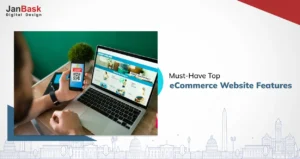
Shoppers, when shopping online, want to feel like they’re in a physical store. The latest eCommerce design trends 2023 aren’t all about convenience, but they’re related to providing customized and serenade customer experiences, just like a physical store.
As users spend too much time online, they expect businesses to present something new and unique. They wish to escape from hard and ambiguous realities. They wish to interact with the latest technologies such as AI, VR (virtual reality), etc.
From the business perspective, adopting these eCommerce trends for 2023 will allow online shop owners to strengthen this customer demand. These eCommerce industry trends and technologies will provide customers with an alternate reality to blow their minds- when purchasing products.
Using e-commerce future trends and new technologies, eCommerce e-commerce website design company can customize their brand experience in a better way for their customers, which will be important in driving more customer engagement and trust in 2023.
Hence, it's important to keep an eye on some of the emerging trends in eCommerce if the current upswing continues. So now, let's analyze which of these new e-commerce industry trends you should focus on and how an eCommerce website development company can help you.
Interested in our eCommerce Design Solutions?

If any eCommerce business won’t stay updated with the recent b2b ecommerce trends 2023, they might fail to benefit from improved customer experience and sales. Furthermore, businesses could miss out on prospective customers who like more innovative product designs, features, and seamless buying experiences.
It is also crucial to understand that eCommerce web design trends can come and go, but staying at the top of the latest trends in eCommerce will make sure that your website stays relevant and engaging to customers.
Let’s find out how businesses are rising to the challenge with the following current trends in ecommerce design for 2023.
Experts say immersive animations in web design or virtual reality will be highly-popular among eCommerce trends for 2023. Websites designers frequently use them to improve the “aesthetic appeal” of their website, offer consumers a more captivating shopping experience, zoom in on product details, analyze objects, and make other mesmerizing transformations.
As you can see, Vibor presents an ideal example of immersive web animation. They’ve selected a breathtaking animation that improves readability as well as engagement with enigmatic techniques such as the hover effect.

They’ve also accentuated their products, i.e., sensors utilized in the automobile sector, as a model using these creative animations. The important point is that dazzles, sparkles, or flares aren’t used much.
These types of recent trends in e-commerce design let consumers find what they’re searching for easily and immediately proceed towards the checkout process. It also motivates shoppers to make impulsive buying decisions because they get engrossed in the product's visuals and descriptions.
This type of latest trends in eCommerce is vital for developing an excellent UX, which is the secrete to assuring consumer satisfaction and repurchases.
As eCommerce companies are becoming more and more vital for the business experience of customers, customer expectations have been increasing! And the businesses that outstrip to offer more enjoyable experiences are increasingly appreciated by customers, who ethos any opportunity to create fond memories.
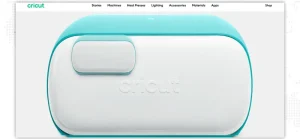
Before purchasing, shoppers will expect to be allowed to interact with products and analyze them from all perspectives. Interactive animations draw consumers’ attention to vital product details or eCommerce website features. With these types of ecommerce market trends and ecommerce websites design companies, you can make your page stand out from the crowd by using various techniques like 3D animations, hover effects, augmented reality, 360° product view, etc.
Cricut’s website presents recent trends in ecommerce, like a scroll animation design to inspect their products, and underlines how consumers can just by using two fingers to close the machine when it's working, accentuating that it's lightweight.
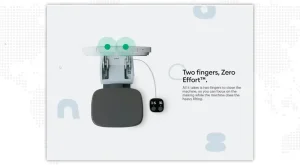
Multidimensional layout would be a compelling eCommerce user interface trend in 2023 as it lets brands showcase their products in a more convenient and synergistic way.
This type of layout also facilitates consumers to weigh products alongside for making more informed decisions while purchasing products. Consumers can not only scroll and move up and down but also left, right, diagonally, and in other ways.
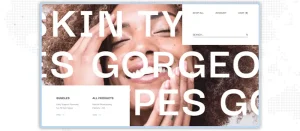
Above design turns more pleasing, classy, and exquisite when such a multidimensional connection occurs. Also, this one of the best emerging trends in eCommerce is timely as it encompasses mobile-first design and provides an interactive buying experience. These type of eCommerce future trends and eCommerce web design hacks helps brands to improve their conversion rates by providing customers with a highly engaging and mesmerizing buying experience.
Another name for page transitions is animated transitions, which are smart page transitions with elements required to develop more alluring UX. They normally highlight a page transition by animating components when the page loads.
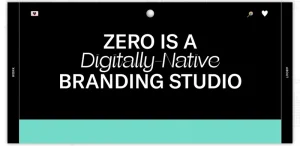
One can also integrate a layer of interactivity to the web page to provide consumers with a more entertaining and unforgettable shopping experience. Even though it's optional, it could be a fantastic way to improve UX.
If utilized accurately, it’ll brighten up the website and make it more straightforward for the users to navigate.
For instance, Zero, a branding studio in NYC, uses image effect transitions, innovative page transitions, and a side navigation menu. It’ll be easily noticed by online consumers, who’ll admire them and thus spend more time on your website.
Universetic / Vaporwave aesthetics is the latest eCommerce web design trends that follow in the footsteps of the cyberpunk subculture. It is defined by an ultramodern, normally autocratic visual style that connects vibrant colors, hi-tech components, and glitchy feels.
These feature elements have been in use since the 1980s and 1990s, such as psychedelic font, neon pastel color palette, and blending gradient color. It has drastically popularized into the latest pop culture that integrates contemporary video.
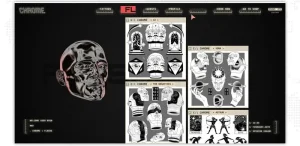
For instance, Chrome, a tattoo parlor in Paris, for an enchanting and astral feeling UX, stuffs its design with glitchy effects, futuristic and old graphical visuals, and typography. This type of aesthetic is mostly used for creating a sense of interest and contemplation that encourages consumers to analyze the products or the website further.
An eCommerce web development company is helpful when you want your online shop to come up with an antique look for its products and brand itself.
Do you think this look is very daring? Then you can choose some elements and modify them to fit your ecommerce web design. Still have doubts? eCommerce web design services can also help you with it.
Neutral and pastel colors on a site generates a calming and alluring atmosphere for the shoppers. It also helps customers focus more on their products or services instead of getting disturbed by bold colors.
These colors also help create a highly professional and systematic look and feel to the website, inspiring shoppers to trust the website. For instance, the L/L Supply homepage colors tell the brand's story by accompanying it with the help of white background and earthy neutral colors, leading to a blissful environment stretched to the product page and beyond.
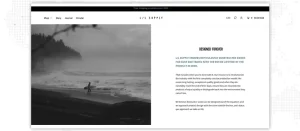
Remember that it could be challenging when applying neutral or pastel color hues; if done inaccurately, your site might appear washed out. Therefore, to get the ideal mix of tones and colors, contact professional ecommerce web design services.
Any eCommerce website design trends include the most compelling elements- Colors and typography! Thick and dramatic typography on an eCommerce site characterizes bold, breathtaking fonts that are simple to read, and using web design principles for the contrasting colors makes that text stand out.
For instance, a site could highlight bold, sans-serif font in white in contrast to a dark background or black text in contrast to a light background. Furthermore, it's important that the text is spaced appropriately, along with proper line and letter spacing, to make sure it can be read easily.
With the help of different font sizes and weights eCommerce website design agency can make it possible to create a pecking order of information, letting the most valuable information stand out. It's also essential to utilize colors in harmony with the site’s entire design to assure a unified look.
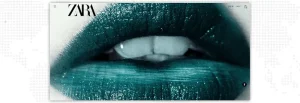
For instance, with the help of non-conventional models to present their peculiar fashion designs when using Neu Helvetica font on a contrasted background, Zara illustrates a strange elegance.
It depicts a simple, modern vibe is suitable for exclusive eCommerce web designs for the fashion industry. Thus, one must avoid these 25 website design mistakes to increase traffic and customer engagement.
Approximately 45% of customers all over the world shop using their mobile devices at least one time a day; therefore, it's crucial to make sure that your eCommerce website design trends are optimized for smartphone devices. Therefore, it should be your web strategy when designing an eCommerce website.
Mobile-first design is a notion that emphasizes smartphone UX when designing an application or a website.
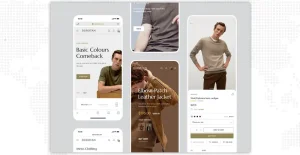
This approach takes into account the restricted screen size and other factors of mobile devices and smartphones and highlights website designing for mobile phone users first and then adjusting the design for bigger screens.
This responsive web design approach lets websites and applications be optimized for mobile phone devices and smartphones, leading to better performance, quicker loading times, and enhanced overall UX.
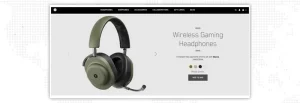
Leading synergetic graphic design processes containing VR (virtual reality), AR (augmented reality), and 3D photography have risen in popularity since 2021. They will continue to make their presence felt in 2023. These technologies help customers in finding the products they’re looking to purchase.
Product pages are the most prominent components of administering an online business. Adding elegant visuals that can draw consumers' attention and presenting the product spectacularly is how you can increase your sales online and conversions. It consists of everything from product photography to product descriptions and how it's presented on the site.
For instance, Master and Dynamic product pages, as shown above. As customers browse through these product pages, they learn more about their headphones' scrupulous design, along with their materials, advanced features, and control techniques. The pages suspended Add to Bag button works as a continuous reminder that you might customize them without distracting from the complete user experience. Customers who want to purchase them don’t have to go back and break the buying experience.
Among the most common page hybrids one can find online are a landing and hybrid page hybrid. These pages often consist of product descriptions, alluring landing page icons, and a product demo video. This type of page is usually utilized to market a new product or enhance the visibility of a current product.
The objective is emerging trends in e commerce is to provide an informative and compelling shopping experience, with the ultimate aim of transforming visitors into consumers.
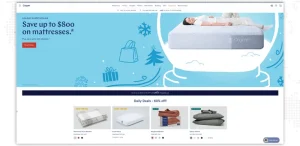
What is new in the world of web development - change is the only constant!
Artificial intelligence and chatbots are gaining popularity as eCommerce growth trends, providing effective and customized user experiences for online buyers by offering precise information, recommending products, and assisting consumers in finding what they’re searching for.
They could also be utilized to offer customized suggestions, answer queries, and offer excellent customer service. Intelligent AI and chatbots could also be helpful in streamlining the checkout process, letting buyers buy products swiftly and diligently.
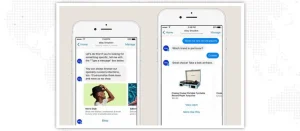
With respect to product pages, storytelling style could be a classic way to describe the product and its functionalities so that it oscillates with shoppers. The eCommerce design trends 2023 also demonstrate how the product could be used in real-world cases, emphasizing its advantages and usage.
For instance, The Sill website demonstrates a very clear and precise impression because of its enchanting colors. This online shop supports a similar perspective: "Plants make people happier!” you can see that the complete website is clean, enlivening, and offers a charming natural ambiance. This is how you should design a website that leaves a lasting impression!
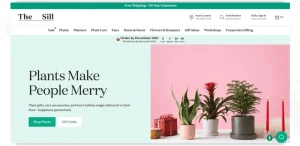 You can even make use of graphic designs to convey an engrossing brand story and liven up your products. It aids in developing an emotional attachment between the brand and the customer straight through a storytelling approach to grow brand visibility and brand credibility to gain customers’ trust.
You can even make use of graphic designs to convey an engrossing brand story and liven up your products. It aids in developing an emotional attachment between the brand and the customer straight through a storytelling approach to grow brand visibility and brand credibility to gain customers’ trust.
You can revamp the purpose of your web content using stories from product selling to helping consumers resolve their issues. By using this approach, your product description can become significantly more enthralling. You can collaborate with an eCommerce website design agency for more benefits. Here are the 17 best eCommerce content marketing tips to follow.
Delightful page filters are modern eCommerce web design trends that add a creative twist to the conventional product page filtering system. Using this B2B eCommerce trend, you can provide unique UX that varies from conventional page filtering systems.
Rather than a simple drop-down menu design, uncommon page filters could include different features like sliders, on/off switches, and other uncommon interactive elements. These emerging trends in eCommerce let you make use of additional graphical elements like icons, visuals, and color coding to support customers in identifying the products they’re longing for.
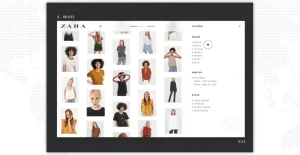
It can be difficult to keep up with the rapid changes in the world of online shopping. But one thing is certain: online shopping has a bright future. Retail online sales in the United States are expected to reach over $1 trillion by 2023, making for intense competition but potentially lucrative opportunities. Using these current B2B e-commerce trends, your business will be able to rise to the top quickly.
For online stores to succeed, they must prioritize user experience design (UX), which centers on providing customers with a satisfying shopping experience that includes some fun elements. You can refer to these top-notch UX website design ideas.
If you're considering launching or revamping an online store, JanBask Digital Design is the ecommerce web design agency to talk to.
Looking for an eCommerce Web Design Agency?

C
Very interesting tips
M
eCommerce is never going down, so one must definitely think of investing in these features
H
Nicely explained.
P
I didn’t even imagine that such little things can create such a long term impact on a business.
J
Glad you found it helpful! Stay updated for more such useful blogs!
N
Nice article. Great trends.
P
Very interesting tips on new trends in eCommerce
N
eCommerce is never going down, so one must definitely think of investing in these new trends in ecommerce
B
Nicely explained b2b ecommerce trends 2023.
B
I didn’t even imagine that such little things as emerging trends in e commerce could create such a long-term impact on a business.
P
Simon Martinez